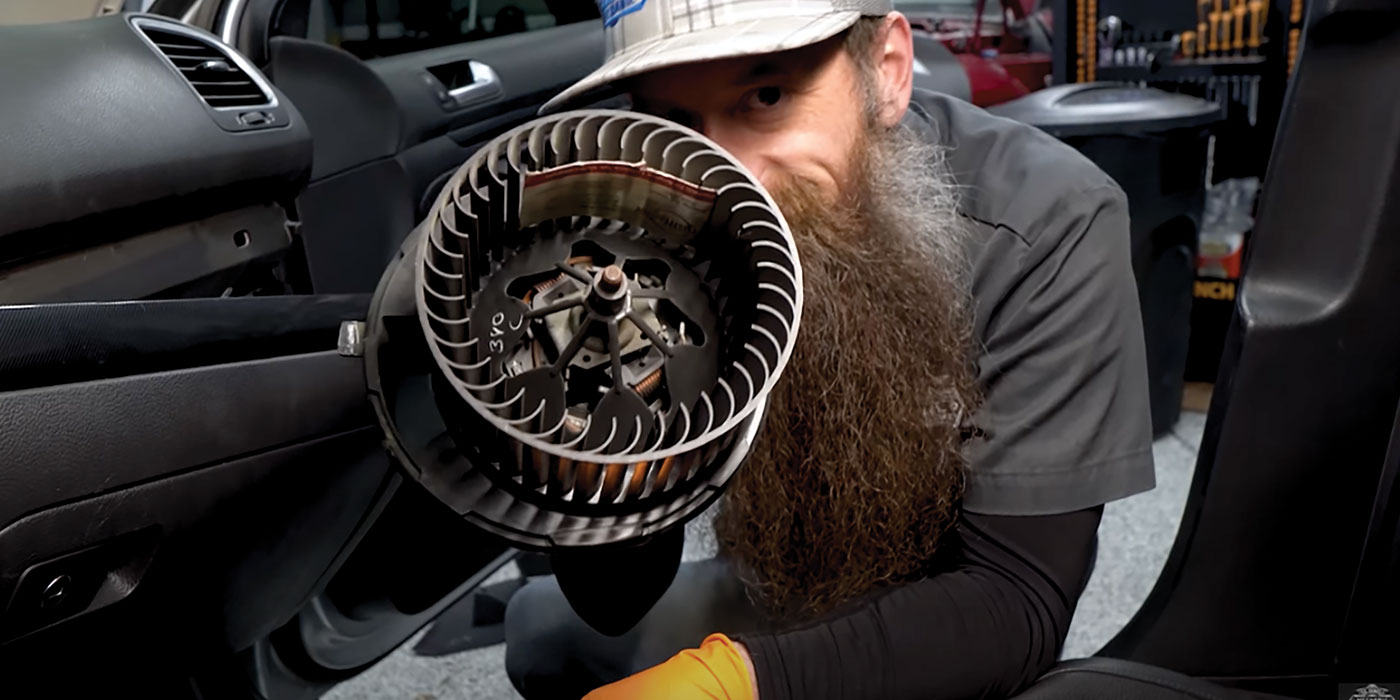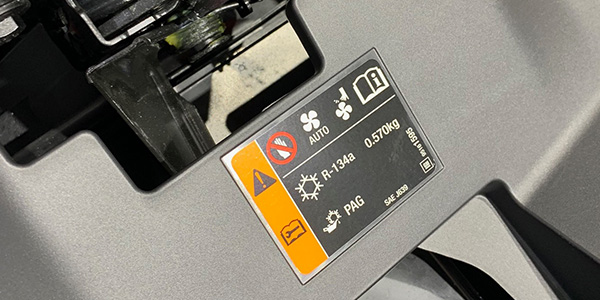 Once a year the Mobile Air Conditioning Society (MACS) hosts a trade show for A/C shop owners and technicians. This year’s event was held in Orlando, FL, January 22-24, and provided a wealth of service information to those who attended the technical sessions. For those who could not be there, we pass along some of the highlights.
Once a year the Mobile Air Conditioning Society (MACS) hosts a trade show for A/C shop owners and technicians. This year’s event was held in Orlando, FL, January 22-24, and provided a wealth of service information to those who attended the technical sessions. For those who could not be there, we pass along some of the highlights.
First The Good News
The good news is A/C service is booming and retrofits are still hot. According to a survey of MACS members, approximately 40% of the A/C work that’s currently being performed is on older vehicles with R-12 A/C systems. The rest are newer vehicles with R-134a A/C systems (50%) or older vehicles that have been retrofitted to R-134a (7%). Only about 3% of the vehicles serviced contain some type of alternative refrigerant.
Another finding in the MACS survey was that about 9% of the older vehicles with R-12 were retrofitted this past year to R-134a when they were serviced. The good news is that there continues to be a need for retrofit parts and equipment. A/C systems are usually retrofitted when major repairs such as replacing a compressor, evaporator or condenser are needed.
The average A/C repair job, according to MACS, was $504 for all types of service work, and an average of $176 over and above any other repair costs to do a retrofit. The average mileage on all vehicles that were serviced in 2003 was over 100,000 miles.
The MACS survey also found that owners of older vehicles are still putting money into their A/C systems, and that people are spending upwards of $1,000 or more to repair and retrofit older cars and trucks.
Flushing Issues
Another interesting finding of the MACS survey is that one out of four vehicles serviced ends up having the A/C system flushed either because the vehicle experienced a compressor failure or the system was found to be contaminated with sludge or debris. Most shops (92%) say they use liquid refrigerant to clean the A/C system, while 5% reported using an approved flushing chemical.
Flushing may be recommended for several reasons. One is to remove sludge from a contaminated system. Another is to remove debris following a catastrophic compressor failure. Flushing also can be used to remove excess oil from the system. Approved flushing chemicals include liquid R-12 or R-134a refrigerant, or any of several products made by various companies.
One new product worth noting here is Honeywell’s new “Genesolv S Series” flushing agent. Based on HFC-245a, Honeywell says it has a faster drying time than other flushes currently on the market, and is safe, non-toxic and non-flammable. Honeywell recommends using a flushing chemical because it has a stronger solvent action than refrigerant alone and provides more effective cleaning.
The issue of flushing is still being debated by vehicle manufacturers. Some, such as Ford and GM, say it’s okay. Others, such as Toyota, say no way. SAE is currently developing a new standard for flushing chemicals to assure materials’ computability and suitability with today’s A/C systems.
To help clear up any misunderstandings technicians might have about flushing procedures, ACDelco announced a new “A/C Flushing” video (SD-AS-1.01-SUP) that is available through its distributors. One caution is that flushing will not remove all of the metallic debris from a contaminated system. That’s why Ford and GM both recommend installing in-line filters in the liquid line to trap any residual debris that a flush may have missed. ACDelco’s new universal inline filter is P/N 15-10413. The new filter is smaller and easier to install than previous filters, uses green HBNR seals and fits several line sizes including 5/16″ lines.
Visteon, an OEM compressor manufacturer, only recommends the use of solvent flushes by RTI and Bright Solutions in a closed-loop flushing process. The flushing machines by RTI and Bright Solutions that Visteon approves use filters to keep contaminants from re-entering the system once they’ve been removed, and to remove air and moisture. Visteon says flushing with refrigerant alone is only effective for removing oil and does not work very well for removing contaminants. Visteon does not recommend using a flush gun with shop air because shop air usually contains humidity and oil vapor, two things you don’t want to introduce back into an A/C system. Visteon also does not recommend flushing hoses with mufflers or expansion devices. These parts should be replaced.
To Dye Or Not To Dye
Leak detection dyes can be a godsend when it comes to locating hard-to-find leaks. Ultraviolet dyes can make even the smallest leaks clearly visible. But not everybody approves their use. During the OEM panel discussion, representatives from the various automakers were asked for their recommendations regarding the use of leak-detection dyes.
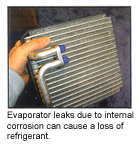 Vehicle manufacturers who currently use dyes or endorse their use to find leaks include Ford (since 1995 in some and 1998 in all), GM (since 2002 in cars and 2003 in trucks), DaimlerChrysler (since 1993), and Nissan (since 1999). Those who do not use or endorse dyes include Honda, Mazda, Toyota, Hyundai and Mercedes-Benz. OEMs who do not use or endorse dye may not honor a compressor warranty if it fails and is found to be loaded with dye.
Vehicle manufacturers who currently use dyes or endorse their use to find leaks include Ford (since 1995 in some and 1998 in all), GM (since 2002 in cars and 2003 in trucks), DaimlerChrysler (since 1993), and Nissan (since 1999). Those who do not use or endorse dyes include Honda, Mazda, Toyota, Hyundai and Mercedes-Benz. OEMs who do not use or endorse dye may not honor a compressor warranty if it fails and is found to be loaded with dye.
Overuse of dye was the main concern that was voiced. Too much dye can dilute the compressor lubricant and increase the risk of compressor noise and failure. The standard recommended dose is only 1/4 oz. A second dose will usually cause no problems but multiple doses over a period of time can overload the system with dye.
If you’re charging a vehicle with refrigerant that already contains dye, the refrigerant should be fed into the system as a liquid, otherwise you may not get enough dye into the vehicle to find the leaks.
Sealers: Still A Sticky Subject
In recent years, various sealer products have been introduced to stop refrigerant leaks. Some are activated by exposure to moisture while other stop leaks by causing seals and O-rings to swell. These products are sometimes used to seal evaporator pinholes and other leaks when a customer can’t afford to have parts replaced. The labor to change an evaporator on some vehicles can be eight to 12 hours or more depending on the evaporator’s location and how much disassembly is required to extract it.
One thing all the members of the OEM panel agreed upon was that none approved the use of sealers. Toyota said the only thing they approve in their systems is refrigerant and the specified compressor lubricant – nothing else.
Technicians have voiced concerns over the use of sealants because it can gum up their recovery and recycling equipment, service hoses and test gauges. To address this issue, several companies have introduced filters designed to protect service equipment from sealers and dyes. AirSept unveiled its new “Recycle Guard” sealant, dye and lubricant separator at the trade show. The unit features two porosity filters to trap debris, and a hollow “distillation” chamber that allows only vapor refrigerant to pass through the unit.
Technical Tidbits
o Spring lock couplings finally going bye-bye? Automakers love spring-lock couplings because they allow fast, easy assembly of A/C lines at the factory. But the couplings are notorious for leaking refrigerant. The next generation of “enhanced” R-134a A/C systems must have lower leakage rates so SAE is developing new coupling standards that require a tighter seal. The goal is to reduce total refrigerant leaked for the entire A/C system to no more than 40 grams per year. That’s only 2 grams per joint per year if the system has 10 connections. The lower leakage levels also will require a new generation of even more sensitive leak detectors.
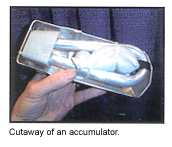 o 42-volt systems and electric compressors. They’ve been talking about it for years, and it looks as if we’ll finally see 42-volt electrical systems in production soon. When they do arrive, look for a whole new generation of A/C systems with electric-driven compressors rather than belt-driven compressors. Toyota already uses an electric compressor in the Prius hybrid car to keep the A/C system working while the engine shuts off momentarily at stop lights to save fuel.
o 42-volt systems and electric compressors. They’ve been talking about it for years, and it looks as if we’ll finally see 42-volt electrical systems in production soon. When they do arrive, look for a whole new generation of A/C systems with electric-driven compressors rather than belt-driven compressors. Toyota already uses an electric compressor in the Prius hybrid car to keep the A/C system working while the engine shuts off momentarily at stop lights to save fuel.
o Charging accuracy. Because the A/C systems in many cars today require such a small charge (1-1/2 to 2 lbs.), it’s very important to make sure the system is accurately charged with the correct amount of refrigerant. Charging equipment with long hoses may contain 4 to 6 oz. of refrigerant in the hoses. If this extra amount is not taken into account, you may end up overcharging the system.
o Inadequate evacuation. Air and moisture contamination are a leading cause of A/C problems. One of the reasons why is that many technicians do not vacuum purge vehicles long enough to remove most of these contaminants. The vacuum cycle during normal refrigerant recovery is only about five minutes, which is not long enough to suck out all the air and moisture.
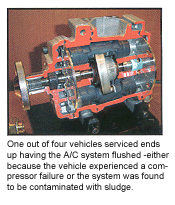 Most experts say it takes 29.7″ or more of vacuum for 45 to 60 minutes to adequately purge the system, 60 to 90 minutes for dual (front/rear) A/C systems, and up to two hours to purge a contaminated system in a colder or humid climate. The accumulator or receiver drier should also be changed if the system has been open or without a charge for a long period of time.
Most experts say it takes 29.7″ or more of vacuum for 45 to 60 minutes to adequately purge the system, 60 to 90 minutes for dual (front/rear) A/C systems, and up to two hours to purge a contaminated system in a colder or humid climate. The accumulator or receiver drier should also be changed if the system has been open or without a charge for a long period of time.
Another suggestion: If air contamination has been causing noise or other problems, deep vacuum purge the system and recharge it with virgin refrigerant rather than recycled refrigerant. Why? Because recycled refrigerant may contain 2 to 3% air.
o Premature heater core failures. Some vehicles have had problems with premature failure of heater cores. Causes include manufacturing defects (an estimated 2%), corrosion due to dirty, contaminated coolant, and corrosion due to electrolysis. If you find black residue inside the heater core, it indicates electrolysis (check for loose or missing ground straps between the engine and body). Either way, the coolant needs to be changed and the system needs to be thoroughly cleaned and flushed before it is refilled. The system may have to be flushed several times if corrosion is severe. It’s also important to get all of the air out of the system, too. Some cars have restrictors in a heater hose to slow coolant flow. If a hose is replaced and the restrictor is left out, the coolant may rush through the heater too quickly and erode the core.
o Here’s a quick way to see if a sticking blend air door inside an HVAC unit is causing a heating or cooling problem. Pinch one of the heater hoses shut to see if A/C outlet temperature drops. If it drops, blend air is leaking heat from the heater core into the A/C airflow.
Note: In the April issue, we will take a look at alternative A/C systems including CO2 cooling units and Red Dot Corp.’s HFC-152a system, which was unveiled at the MACS show.
MY PERSPECTIVE
By Ed Sunkin, Editor
Walking between the MACS seminar rooms and trade show arena, I saw an interesting passage on one of the displays. It sort of reminded me of those little inspirational messages that are displayed on marquees and billboards in front of churches.
The MACS quote read: “Membership in MACS doesn’t cost – It pays.”
I found that to be a clever little quip – and realized it could be applied to the show itself.
As any progressive shop owner knows, there are costs to attending such trade shows – transportation, accommodations, meals and even time away from the shop. (Note: When submitting federal taxes, much of these expenses can be written off as the cost of doing business.)
But these costs are certainly worth the value when you consider the programs offered at the 2004 MACS Convention and Trade Show in Orlando in January.
One of the biggest benefits of attending the MACS show is that you got real solutions and responses from those who make the systems today’s tech is servicing. I can’t think of anywhere else where you can find such a targeted representation from the vehicle manufacturers. Each one of the factory service professionals on hand during the technical sessions and the trade show was helpful to all who asked questions.
I also was impressed at the number of Case Study sessions held at the convention, allowing each OE manufacturer of cooling and A/C systems and components plenty of time to address the audience on some of the latest issues regarding their products.
Building a Technical Library
During the MACS show, I secured a number of technical instruction books that will be used for article ideas and technical service tips in upcoming issues of Underhood Service.
Although these books were provided free, each of them could have easily cost about $40 to $50. The ones I secured at this year’s show included Cabin Air Filter Installation Instructions from MicronAir; Air Conditioning Tips & Techniques from Standard Motor Products; and Delphi HVAC Diagnosis from Delphi Integrated Service Solutions.
All of these publications would be great additions to an automotive repair shop’s library. In fact, shop owners who grabbed up those books can use the materials to hold training classes for their techs, or enable techs to use them as study guides for MACS, ASE and other supplier-sponsored air conditioning certification programs and tests.
 It’s Showtime!
It’s Showtime!
And finally, the two-day trade show itself provided plenty of opportunity to see some of the latest tools, equipment and services – all in one location. This year’s trade show was packed with more than 70 exhibitors – a wonderful way to pickup informative literature, catalogs and other product descriptions, as well as see a live, pink llama (courtesy of Ranshu, Inc.).





